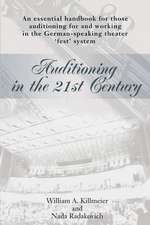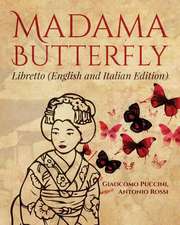Inventing the Opera House: Theater Architecture in Renaissance and Baroque Italy
Autor Eugene J. Johnsonen Limba Engleză Hardback – 16 mai 2018
Preț: 392.87 lei
Nou
Puncte Express: 589
Preț estimativ în valută:
75.18€ • 80.39$ • 62.68£
75.18€ • 80.39$ • 62.68£
Carte disponibilă
Livrare economică 28 martie-11 aprilie
Livrare express 13-19 martie pentru 54.82 lei
Preluare comenzi: 021 569.72.76
Specificații
ISBN-13: 9781108421744
ISBN-10: 1108421741
Pagini: 346
Ilustrații: 132 b/w illus. 63 colour illus.
Dimensiuni: 185 x 262 x 22 mm
Greutate: 1.03 kg
Editura: Cambridge University Press
Colecția Cambridge University Press
Locul publicării:New York, United States
ISBN-10: 1108421741
Pagini: 346
Ilustrații: 132 b/w illus. 63 colour illus.
Dimensiuni: 185 x 262 x 22 mm
Greutate: 1.03 kg
Editura: Cambridge University Press
Colecția Cambridge University Press
Locul publicării:New York, United States
Cuprins
1. Ferrara and Mantua, 1486–1519; 2. Rome 1480s–1520; 3. Early theaters in Venice and the Veneto; 4. Sixteenth-century Florence, with excursions to Venice, Lyon and Siena; 5. Early permanent theaters and the commedia dell'arte; 6. Theaters in the ancient manner and Andrea Palladio; 7. Drama-Tourney theaters; 8. Ferrara, Parma, and theaters of Giovanni Battista Aleotti; 9. Seventeenth-century theaters in Venice: the invention of the opera house; 10. Seventeenth-century theaters for comedy and opera; 11. Teatro di Tordinona in Rome, Queen Christina of Sweden, and Carlo Fontana.
Recenzii
'… sprinkled with photographs and illustrations of Italian theatres as well as architectural plans and digital reconstruction of stage interiors. The content is technical throughout, but there's just enough colour to hold the general reader's interest.' BBC Music Magazine
'Beautifully presented … an important addition to the bibliography on the topic …' Brian Robins, Opera
'This is clearly the definitive study of Renaissance and early Baroque theaters and should be on the reading lists not only of scholars and students in the fields of theater and architecture but also those of musicologists and historians concerned with the role of culture in early modern Italy.' Jonathan Glixon, Renaissance Quarterly
'The book is clearly written and profusely illustrated (nearly two hundred images in black-and-white and color). This is clearly the definitive study of Renaissance and early Baroque theaters and should be on the reading lists not only of scholars and students in the fields of theater and architecture but also those of musicologists and historians concerned with the role of culture in early modern Italy.' Jonathan Glixon, Renaissance Quarterly
'Beautifully presented … an important addition to the bibliography on the topic …' Brian Robins, Opera
'This is clearly the definitive study of Renaissance and early Baroque theaters and should be on the reading lists not only of scholars and students in the fields of theater and architecture but also those of musicologists and historians concerned with the role of culture in early modern Italy.' Jonathan Glixon, Renaissance Quarterly
'The book is clearly written and profusely illustrated (nearly two hundred images in black-and-white and color). This is clearly the definitive study of Renaissance and early Baroque theaters and should be on the reading lists not only of scholars and students in the fields of theater and architecture but also those of musicologists and historians concerned with the role of culture in early modern Italy.' Jonathan Glixon, Renaissance Quarterly
Notă biografică
Descriere
This book examines the invention of the architecture of the modern opera house in Italy between the late fifteenth and late seventeenth centuries.






















